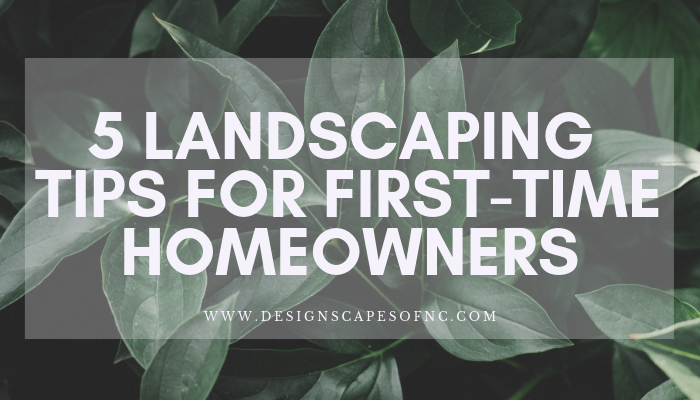
Enjoying your own yard is one of the best parts of owning a home! Personalizing your landscaping can quickly boost the value of your house and make it feel like yours. Here are 5 Landscaping Tips for First-Time Homeowners:
-
Inspect Your Landscaping
Take a walk around your landscape and look for red flags you might not have known to look out for before buying your new home.
First, look for tree branches hanging over your roof. Not only to prevent one of homeowners biggest fear a.k.a. a big storm causing limbs to fall onto your home. But also to prevent leaves falling directly into your gutter which can lead to mold, deterioration and even leaks.
Next, check for diseased plants you’ll need to get rid of or plants being damaged by pests. Once you have that all figured out and remove any red flag plants, you can start with a blank canvas!
-
Learn About Your Local Gardening Zone
A hardiness zone is a geographic area defined to enclose a certain range of climatic conditions that are compatible with the plant growth and survival rate in that particular area. Every state, city and zone is a different in what you can and can’t grow. If you are local to Raleigh like us, you would be in Zone 7. Both annuals and perennials can be planted in Zone 7. Once the last frost comes-and-goes, it’s time to dive into all your landscaping plans!
But remember it’s not always about regional climate, you’ll want to consider your home’s specific landscaping design. So make sure you ask yourself questions like: Does your front yard get more sunlight than your backyard? Is your house slanted on a hill where you can expect rainwater build-up?
As you find the answers to your questions and find the right plants you want to use in your landscape design, keep it all in your back pocket when purchasing plants and where you decide to put them!
-
Think Maintainability Over Design
It is really easy to start mapping out your dream garden or the perfect curb appeal design but it is important to start with small projects you can maintain before executing the bigger projects! Landscape is more than just finding the right greenery, digging some holes and planting the flowers in the perfect spot. After all of that is said-and-done you have to correctly water your plants, prune shrubs, weed the garden beds and in general make sure the landscape survives the season.So instead of thinking too big at first, pick a few easy projects and execute them perfectly! Once you’ve learned how to maintain a small portion of your landscaping then you can start thinking about design.
-
Learn How to Protect From Pests
Now as much as we love squirrels, deer and rabbits; their appetite for our plants turns them into the pests that can ruin your landscape! It’s best to think ahead by: wrapping fruit trees in wire, suspend your bird feeder so squirrels can’t grab a quick lunch, and keeping your grass no longer than 3 inches high. Going as far as creating a crushed rock perimeter around the exterior your home or adding plants to the garden that deter pests will help save your landscaping.
Things like this will, of course, change the aesthetic of your landscape designs! So consider how these pests will affect your vision before you start planting!
-
Don’t Be Afraid to Ask For Help!
If this is all starting to sound like too much to handle then consider asking for outside help! Asking advice from parents or neighbors and how they handled their first homes landscaping needs can always make things sound more doable. If that doesn’t help, hiring someone like DesignScapes of NC to bring your dreams to life is something to consider. Not all of us have green-thumbs or can fix the plumbing so bringing in experts for those types of things can save lots of headaches and give you more time to focus other new home projects!


Taylor Bishop says
I wanted to thank you for these landscaping tips. I like that you mentioned you should pick small projects to make sure you can maintain those. This also seems like a great way to figure out exactly what you want with your landscape after only trying a few projects.